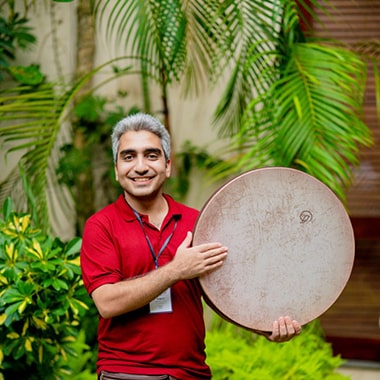Online Daf Course in canada
Links
- Baglama canada Course
- Persian Piano canada Course
- Tar canada Course
- Tombak canada Course
- Tanbur canada Course
- Darboka canada Course
- Daf canada Course
- Persian Dotar canada Course
- Divan canada Course
- Persian Santoor canada Course
- Setar canada Course
- Oud canada Course
- Kanun canada Course
- Ghaychak canada Course
- Persian Kamancheh canada Course
- Keyboard canada Course
- Persian Ney canada Course
- Persian Violin canada Course
- Child Music canada
- Fluet Children canada
- Orff Music canada
- Piano Child canada
- Tonbak Child canada
- Violin Child canada
- Xylophone Child canada
- Accordion canada
- Cajon canada
- Cello canada
- Clarinet canada
- Classic Violin canada
- Double Bass canada
- Electric Guitar canada
- Flute canada
- Guitar canada
- Handpan canada
- Hangderam canada
- Harmonica canada
- Harmonica canada
- Harp canada
- Lakota Fluet canada
- Melodica canada
- Persian Tang canada
- Piano canada
- Saxophone canada
- Violin Alto canada
- Iranian Singing canada
- Persian Avaz canada
- Persian Chore canada
- Persian Foley canada
- Persian Pop Singing canada
- Persian Singing canada
Close Filters



Niyayesh Mahdavi - Daf course
tuition: 600,000 toman
Arezoo Mohajer - Daf course
tuition: 600,000 toman
Raha Neshat - Daf course
tuition: 750,000 toman
Raziyeh Sheikh - Daf course
tuition: 1,000,000 toman
Alireza Shahini - Daf course
tuition: 1,100,000 toman
Amirhossein Moemen - Daf course
tuition: 120,000 toman
Maral Badr - Daf course
tuition: 150,000 toman
Ramyar Haghdoost - Daf course
tuition: 180,000 toman
Amirebrahim Asadi - Daf course
tuition: 200,000 toman
Reza Siahbalaii - Daf course
tuition: 330,000 tomanDaf canada
The best way of daf training from beginner to advanced at home
In the past, teaching daf and playing daf was something like an untouchable dream for Iranians abroad as well as English-speaking people; But in the early years, thanks to the efforts that Inavaz institute’s teachers made, the beginner to advanced daf training took a different shape and it was held in the form of online classes.
The idea of teaching daf from beginner to advanced at home was taken place for the first time by Inavaz group.
In this method of online daf training, which is mainly prepared for the purpose of teaching daf to Iranians abroad and English speakers, the student is going to be trained at home and through the using of live feature in the platforms by famous daf teachers in Iran.